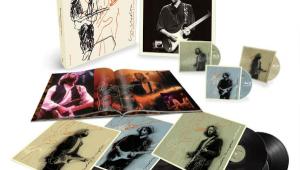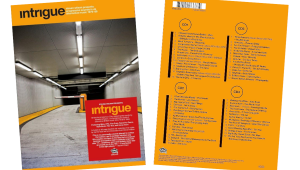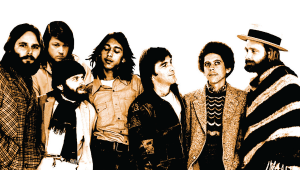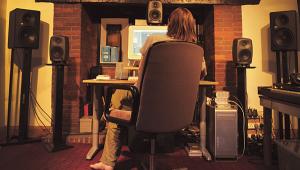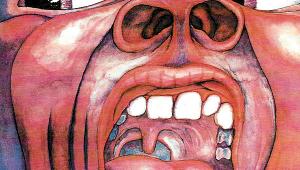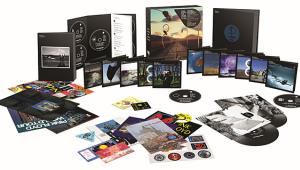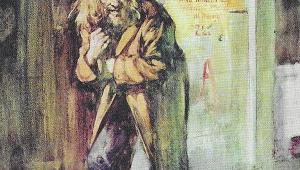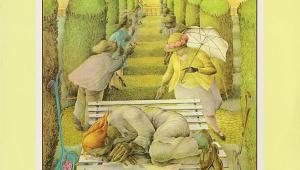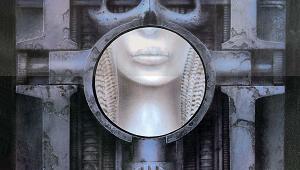Remaster Class – The Doobie Brothers: The Captain and Me
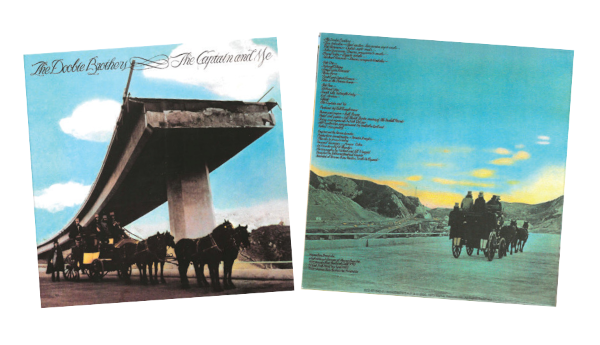
While the roots of their ultimate success were duly planted with the infectious singalong nature of their first mega-hit single “Listen to the Music” — from July 1972’s Toulouse Street — The Doobie Brothers truly upped their game with the broader strokes of March 1973’s double-platinum sea-changer, The Captain and Me.
My original 1973 Warner Bros. Captain pressing is virtually unplayable today, boasting a well-weathered cover that sports a perfect ringwear halo encircling the jutting, partially collapsed Interstate 5 highway extension in California at the top of the frame, and then cradling the carriage, humans, and horses in collective repose at the bottom of the still-striking cover image. I do have a much-better Nautilus Recordings half-speed-mastered 1979 LP that does great justice to key track elements like the crisp tambourine and the trippy, Beatlesque synth line permeating the later verses of the opening track “Natural Thing” — though the 180-gram Speakers Corner 2007 pressing wins the Captain LP lottery, hands down.
 And yes, there was indeed a 1973 quad Captain LP eventually accessed for revamped inclusion in the stellar four-disc 2020 Rhino/Warner Bros. Quadio Blu-ray box set. The original 4-track quad mixes were used as the DTS-HD Master Quadio 4.0 source material via the original 15ips ½-inch analog tape, as mastered and authored by Craig Anderson for BD. The light-touch
acoustic-guitar strumming all throughout the restless “Clear as the Driven Snow” travelogue only heightens the song’s powder-addiction drama. The full breadth of the supportive strings and Jeff
“Skunk” Baxter’s sublime pedal-steel work on “South City Midnight Lady” glide almost effortlessly into the ether.
And yes, there was indeed a 1973 quad Captain LP eventually accessed for revamped inclusion in the stellar four-disc 2020 Rhino/Warner Bros. Quadio Blu-ray box set. The original 4-track quad mixes were used as the DTS-HD Master Quadio 4.0 source material via the original 15ips ½-inch analog tape, as mastered and authored by Craig Anderson for BD. The light-touch
acoustic-guitar strumming all throughout the restless “Clear as the Driven Snow” travelogue only heightens the song’s powder-addiction drama. The full breadth of the supportive strings and Jeff
“Skunk” Baxter’s sublime pedal-steel work on “South City Midnight Lady” glide almost effortlessly into the ether.
For his part, guitarist/vocalist Patrick Simmons laid out the supple lead solo on his Gibson 335 — an electric guitar that, as he recounted, was “great for treble, as long as you weren’t distorting it.” If you’re wondering about the seductive “South City” synth sound that inhabits the back half of the track, Simmons confirms The Doobies invited Stevie Wonder’s go-to synth programmers/producers Malcolm Cecil and Robert Margouleff to the recording sessions — for which they showed up with some massive keyboards. “I told them I wanted to hear a woman’s voice, and they took it from there,” Simmons clarifies. “They came up with a sustained upper-register tone that I think is the crowning touch of the song.”
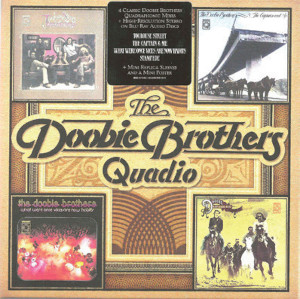 The Quadio 4.0 mix is easily my preferred method of Captain listening — at least until the powers that be give this album the full Dolby Atmos treatment it deserves. Coming in a very close second is the 2001 Rhino/Warner Bros. DVD-Audio edition. The irrepressible Elliot
Scheiner produced, engineered, and mixed the Dolby Digital Surround and DTS Surround 5.1 options for this DVD-A — and The Doobies themselves very much approved. “Elliot is the best in the business,” affirms Simmons. "There’s something to be said for a guy who is a natural — someone who can hear things the rest of us can only imagine, you know?”
The Quadio 4.0 mix is easily my preferred method of Captain listening — at least until the powers that be give this album the full Dolby Atmos treatment it deserves. Coming in a very close second is the 2001 Rhino/Warner Bros. DVD-Audio edition. The irrepressible Elliot
Scheiner produced, engineered, and mixed the Dolby Digital Surround and DTS Surround 5.1 options for this DVD-A — and The Doobies themselves very much approved. “Elliot is the best in the business,” affirms Simmons. "There’s something to be said for a guy who is a natural — someone who can hear things the rest of us can only imagine, you know?”
 Scheiner steers the Captain 5.1 ship just right, especially on such linchpin tracks as “Long Train Runnin’,” which features a dramatic right-front/rear-left guitar tandem split and Michael Hossack’s percussive conga and timbale accents that nestle in the rear channels. Meanwhile, “China Grove” (whoa-oh!) soars all across the soundstage due in no small part to guitarist/vocalist Tom Johnston having come up with its ballsy, chunky signature riff on his trusty Gibson J-50 acoustic guitar. “In those days, more often than not, I wouldn’t even write the words until after we recorded the track,” Johnston told me, “and they were finally built around Billy Payne’s main piano lick. Later, I discovered there actually is a town near San Antonio, [Texas] called China Grove. I thought I had made it up!”
Scheiner steers the Captain 5.1 ship just right, especially on such linchpin tracks as “Long Train Runnin’,” which features a dramatic right-front/rear-left guitar tandem split and Michael Hossack’s percussive conga and timbale accents that nestle in the rear channels. Meanwhile, “China Grove” (whoa-oh!) soars all across the soundstage due in no small part to guitarist/vocalist Tom Johnston having come up with its ballsy, chunky signature riff on his trusty Gibson J-50 acoustic guitar. “In those days, more often than not, I wouldn’t even write the words until after we recorded the track,” Johnston told me, “and they were finally built around Billy Payne’s main piano lick. Later, I discovered there actually is a town near San Antonio, [Texas] called China Grove. I thought I had made it up!”
Fifty years on, The Captain and Me continues to command our rapt listening attention. It’s easy understand why: It’s a natural thing, don’t you know — without that love, where would your ears be now?

